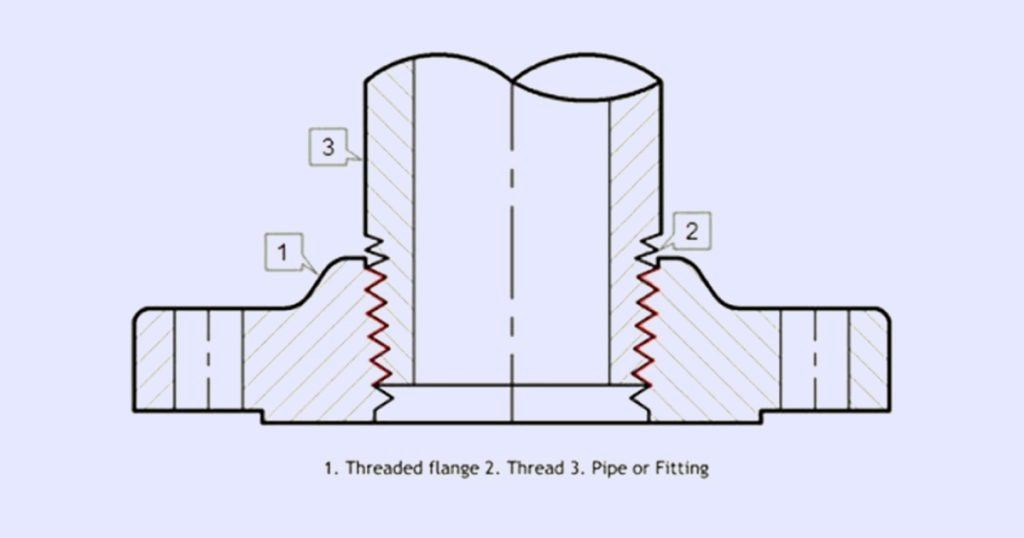You would definitely have heard about the threaded flanges in the piping system. You might have heard people praising the versatility, durability and usefulness of threaded flanges. Due to such properties the wide use of threaded flange is found in many industries starting from oil and gas till construction and more. But what is exactly the threaded flange? Why is it named so? How does the design of threaded flange actually work? Find answer to all such questions in this blog post without missing any detail about threaded flange.
What is a threaded flange?
A threaded flange has a design which possesses the inner bore of the flange in the form of thread. The shape of threaded flange is similar to slip on flanges. Hence, it has plate shape or basically a hub with long threads.
Threaded flanges have specifically a female threaded interior surface in the design. This surface allows an ease to detach and attach the threaded flange into threaded pipes. This flange type has a raised face which helps in enhancing the connection in between the pipes. A female threaded interior surface when paired with male thread enhances the alignment and creates a strong structure.
This flange is typically applicable to all piping systems where welding is not an option or feasible to perform. Hence, it is most applicable in piping systems carrying hydraulic oils, fuels, lubricants, compressed air and gas etc. In such areas of risk for explosives threaded flange is a highly recommended option.
Types of threaded flanges

Threaded flanges are attached to a flange with the help of screws to make a secure connection without need of welding. Here are some of the types of threaded flanges classified based on their application.
Threaded pipe flange
The most common type of threaded flange features internal thread which aligns with external threads. This feature allows proper screwing of the pipes together without the process of welding.
Threaded reducing flange
This type of threaded flange allows easy connection of the pipe even with having different diameters even without welding. It is very useful for the system that needs to change the diameter of the pipe for better flow.
Threaded raised face flange [RF]
The raised face present in the design helps to concentrate the pressure on the base of the gasket which ultimately helps in enhancing the quality of the seal. These threaded flanges are highly recommended in systems with high pressure.
Threaded flat face flange [FF]
The design of the threaded flat face flange possesses a flat face which allows to set a uniformity in connection of flange and surface of gasket. This setup is most used in low pressure systems.
Threaded Lap joint flange
This flange type is typically applied in the piping system which demands frequent attachment and detachment for inspection, cleaning and maintenance. These are proven ideal for systems with low pressure areas.
Threaded blind flange
This type of the flange is applied at the end of the system to completely obstruct the flow of the system. It possesses the screw thread for connection at the end of the pipe. Also, the design of the flange doesn’t have the center hole which works in obstructing flow of fluid.
Uses of Threaded flanges
Threaded flanges are also recognized as screwed flanges. It is mainly used for connection of small piping systems where welding is not a feasible option. Check out here some of the most wide uses threaded flanges as follows:
Threaded flanges are mostly applicable in low pressure piping systems. It is because these areas don’t demand extreme sealing and welding.
Main use of the threaded flange is in environments which are explosive or high flammable. Here threaded flange provides a safer connection without welding.
These are ideal for the system which demands frequent attachment and detachment of connection. Also, it becomes easy for periodic inspection and maintenance of the piping system.
Threaded flange is composed of specialized material which is able to tolerate high temperature and corrosive substances. These conditions are generally seen in chemical plants or refineries.
It is used in pipe lines having small diameters like in plumbing and water supply lines.
Threaded flanges are the best retrofitting solutions when it comes to modify existing piping systems without cutting or welding.
Advantages of Threaded flanges
There are several advantages of opting threaded flanges especially in the industrial application. It is a perfect alternative for the place where welding is not an desirable option. Check out some of the key advantages of threaded flanges as follows:
No welding required
Threaded flanges get easily attached to the pipe without need for welding. Hence, it is an ideal option for the system which must avoid welding for safety reasons especially in explosive atmospheres.
Ease of installation and removal
It is very easy to install and detach the connections made from threaded flanges. Therefore, it is suitable for applications which need maintenance and repair work periodically. Threaded flanges are the best option to use in a temporary piping system.
Suitable for high pressure application
Threaded flanges are mostly applicable in high pressure systems especially in pipes with smaller sizes.
Cost effectiveness
In installation of threaded flanges there is significant reduction in cost associated with equipment and labor. Threaded flanges don’t require any type of special equipment during installation which makes the process faster and more economical.
Good for low-temperature and non-cyclic applications
It is best preferable to install threaded flanges in a piping system which faces lesser temperature fluctuations and cyclic stress.
Corrosion resistance
Threaded flanges are typically composed of stainless steel material which imparts the property of corrosion resistance. Hence, the durability of the flange makes it ideal to face the harsh environment in the piping system.
Convenient in hazardous environment
It is especially applicable in areas which are dangerous to follow welding like in pipes carrying highly explosive or flammable gas.
Flexibility
Threaded flanges offer much flexibility in form of ease to attach and detach from the system. Thus, it is beneficial to opt for this flange when a system requires frequent disassembly, inspection, maintenance or cleaning process.
Tips for best installation of Threaded flanges
It is important to follow all procedure set after step to ensure a safe and leak free connection with threaded flanges. Make a checklist of following tips to practice best installation of threaded flanges.
Ensure proper alignment
Make proper alignment of the pipe and flanges to avoid any chances of cross threading.
Misalignment in connection might lead to damage or improper sealing of the system.
Thread compatibility
Ensure to select the appropriate size of thread and flange with respect to pipe and flange to get a compatible size type like NPT, BSP etc. Mismatched types of thread might cause leaks or damage in the system.
Inspect threads
Check the threads for any sign of damage or dirt before use. Properly clean any sort of debris or dirt present on thread to ensure proper fit.
Use thread sealant
Prefer application of suitable thread sealant or PTFE tape at portion of male thread. These sealants help in prevention of leaks and ensure a secured fit in the system. Avoid overuse of the sealant to prevent the excess material entering the pipe.
Hand tighten first
Start the hand tightening of the flange to ensure a thread engages in the correct manner. Hand tightening helps to avoid cross threading which is enough to damage pipe and flange both.
Use proper tools
Once hand tightened, prefer use of pipe wrench to snug flange. Remember don’t over tighten which might cut the thread into strips or crack up the flange.
Gasket installation
When a gasket is needed for enhancing seal make sure it gets placed correctly in between two flanges. Ensure the gasket material selected is compatible with fluid flowing through the pipe.
Bolt installation
Install bolts in pattern or criss cross or star and tighten them gradually and slowly. These small increments will help in evenly distribution of pressure along the surface of the flange.
Check for leaks
After installation, conduct a pressure test to check for any leaks. If there is any leak, recheck the alignment of flange, threads, bolts and gasket.
Follow torque specifications
Prefer to follow the manufacturer recommended specification list of torque for tightening which helps in avoiding over stress to components.
Conclusion
Threaded flanges are proven reliable, efficient and most recommended options especially for small bore piping systems. The connection of threaded flanges help to give a strong, reliable and leak free system without need of welding. Different types of the threaded flange help in connecting the pipe with distinct diameter together in explosive and highly flammable areas. There is great use of threaded flanges which makes it an ideal choice for different industries. Consider the advantages that threaded flange imparts after installation for making the decision of opting this flange. Also, to practice the best installation of threaded flange refer to all of the tips mentioned above in the blog.
FAQs
What is the application of threaded flange?
Threaded flange is applied on to pipe which is difficult to weld together especially in highly inflammable and explosive areas.
When should you use a threaded flange?
Threaded flanges are applied to areas where cost is a major concern. Also, it is recommended to use when a system requires frequent disassembly and attachment. Mostly it is applied to systems facing low pressure and vibrations.
What is the difference between flange and thread?
Flange helps to offer durability, ease of maintenance and strength in connecting the pipe across high pressure and temperature areas. However, thread is a cost effective option applied with pipe of smaller diameter and low pressure areas.
What is the dimension of threaded flange?
The size and dimension of threaded flange lies in between ½ inch till 6 inch as per requirement. But in many industries threaded flanges are manufactured till size of 24”.
Which is the standard for selecting the threaded flange?
It is advised to select and install the threaded flange composed with following ASME B16 standards to get best results.


